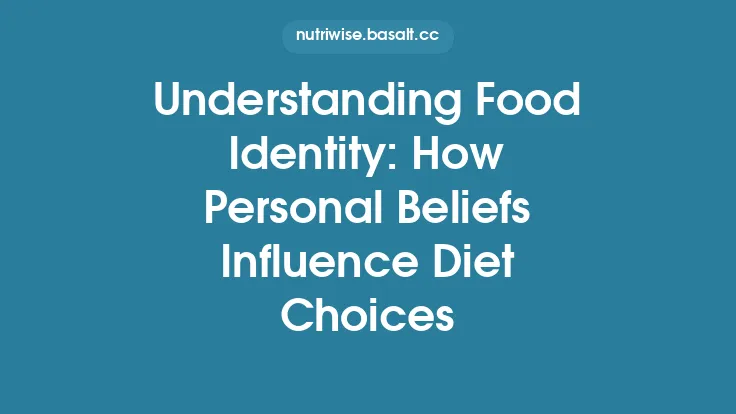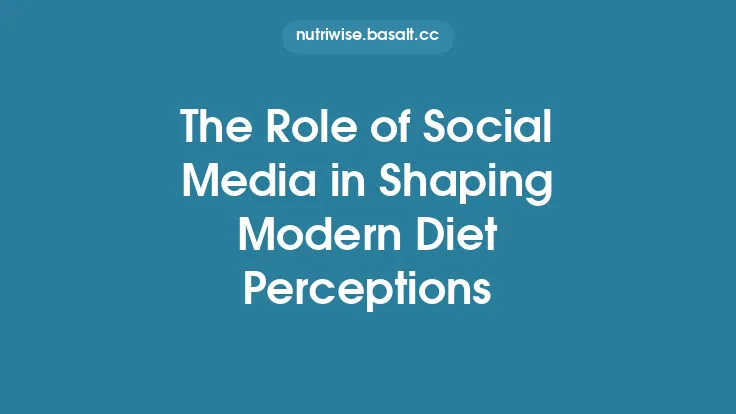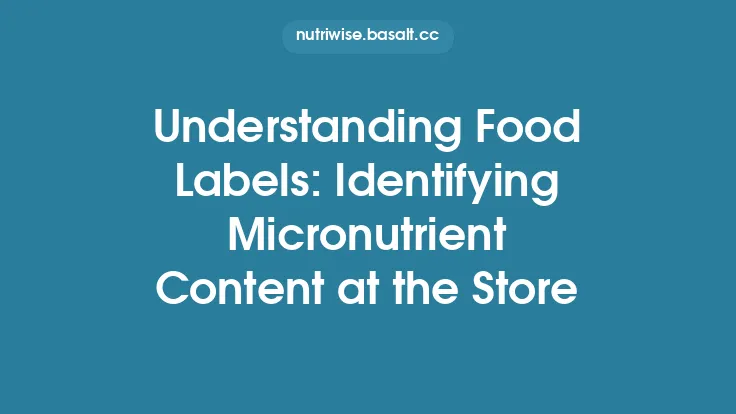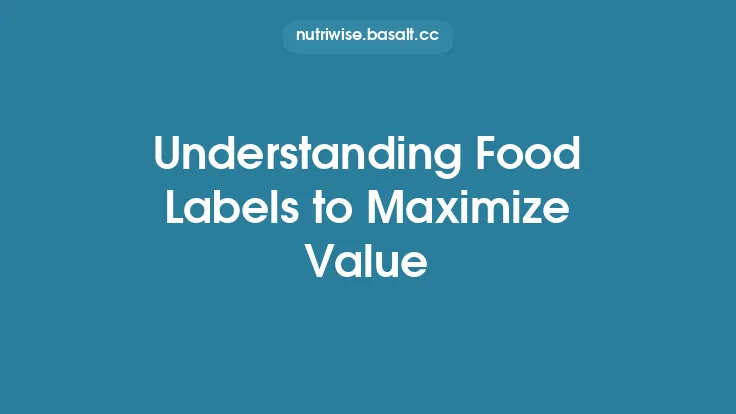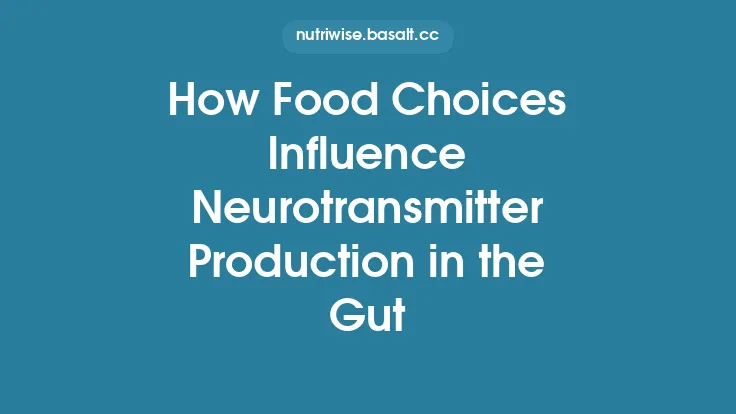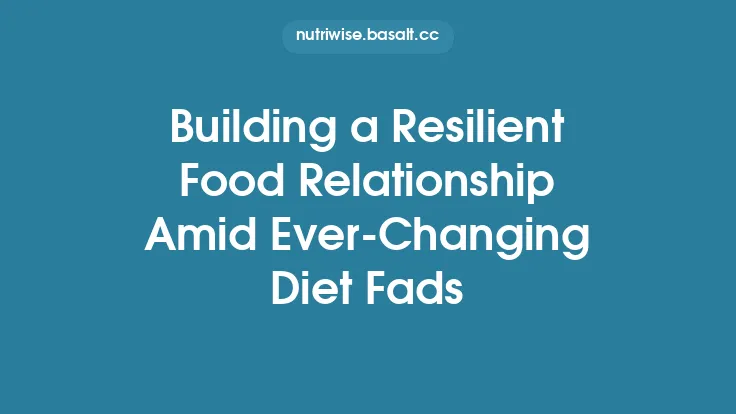Modern diet culture is saturated with symbols that go far beyond the simple act of nourishment. From the sleek green logo on a plant‑based milk carton to the hashtag #ketoLife that floods Instagram feeds, the foods we choose today carry layers of meaning that shape our identities, signal our values, and influence the way we navigate the marketplace. Understanding these symbolic dimensions is essential for anyone who wants to grasp why certain diet trends explode in popularity, why some products command premium prices, and how consumers negotiate the complex web of health, ethics, and status that underpins everyday food decisions.
The Semiotics of Contemporary Diets
Semiotics—the study of signs and symbols—offers a powerful lens for dissecting modern food choices. In the context of diet, a “sign” can be a visual cue (the pastel packaging of a vegan yogurt), a linguistic marker (the word “organic”), or a cultural reference (the “Mediterranean” label that evokes sun‑kissed coasts and longevity). These signs are interpreted by consumers through a shared system of meanings that evolve over time.
- Denotative vs. Connotative Meaning
- *Denotative* aspects refer to the literal information a label provides (e.g., “contains 5 g of protein”).
- *Connotative* aspects are the emotional or cultural resonances that accompany the same information (e.g., “high‑protein” may connote athleticism, discipline, or masculinity).
- Iconic, Indexical, and Symbolic Signs
- *Iconic* signs resemble what they represent (a picture of a wheat stalk on a whole‑grain bread).
- *Indexical* signs point to a cause or condition (a “non‑GMO” seal indicates a production process).
- *Symbolic* signs rely on learned conventions (the color green is widely associated with “natural” or “healthy”).
- Polysemy in Food Labels
A single term can carry multiple meanings across different consumer groups. “Clean” might mean free of additives for a health‑conscious shopper, while for a minimalist lifestyle advocate it could signal ethical simplicity.
By mapping these semiotic layers, we can see how modern diets are not merely nutritional regimes but also communicative acts that broadcast personal narratives to the world.
Symbolic Capital and Food Choices
Pierre Bourdieu’s concept of *symbolic capital*—the prestige and recognition one gains from possessing certain cultural assets—translates neatly into the realm of food. In contemporary society, the ability to consume and display particular foods can confer status, differentiate social groups, and reinforce hierarchies.
- Gourmet vs. Everyday: Purchasing a rare, single‑origin cacao bar signals refined taste and disposable income, whereas buying a bulk bag of generic rice signals practicality and frugality.
- Dietary Exclusivity: Adhering to a strict paleo or keto regimen can serve as a badge of discipline, often admired within fitness circles.
- Ethical Signaling: Choosing plant‑based alternatives is increasingly viewed as a marker of progressive values, granting social approval in certain peer groups.
These forms of symbolic capital are reinforced through social media, where visual documentation of meals becomes a currency of its own. The more “capital‑rich” a food choice appears, the more likely it is to be emulated, creating feedback loops that amplify particular diet trends.
Ethical Symbolism in Plant‑Based Diets
The surge of plant‑based eating is not solely driven by health considerations; it is deeply intertwined with ethical symbolism. When a consumer selects a soy‑based burger, the act is laden with meanings that extend beyond taste:
- Animal Welfare: The product becomes a visual protest against animal exploitation, allowing the eater to align actions with moral convictions.
- Environmental Stewardship: Labels such as “low carbon footprint” or “water‑wise” transform the meal into a statement about planetary responsibility.
- Social Justice: Some brands foreground fair‑trade sourcing, turning the purchase into a gesture of solidarity with marginalized producers.
These ethical symbols are often codified in packaging (e.g., “Certified Humane,” “Carbon Neutral”) and marketing narratives, making the act of consumption a performative endorsement of broader values.
Health Symbolism and the Rise of “Clean Eating”
The phrase “clean eating” epitomizes how health symbolism permeates modern diet culture. While the term lacks a precise scientific definition, it carries powerful connotations:
- Purity: “Clean” suggests the absence of contaminants, additives, or “impurities,” evoking a sense of bodily sanctity.
- Control: It implies mastery over one’s intake, reinforcing narratives of self‑discipline and personal agency.
- Moral Superiority: Implicitly, “clean” foods are often positioned as morally better than “dirty” processed alternatives, creating a dichotomy that can influence social judgments.
The health symbolism of “clean” is reinforced through visual cues—minimalist packaging, pastel color palettes, and the frequent use of words like “whole,” “real,” and “natural.” These cues trigger cognitive shortcuts that equate aesthetic simplicity with nutritional superiority, even when empirical evidence may be ambiguous.
Environmental Symbolism and Sustainable Food Labels
Sustainability has become a central symbolic theme in modern food marketing. Labels such as “organic,” “regenerative,” “locally sourced,” and “plastic‑free” function as shorthand for complex ecological narratives.
- Organic: Historically linked to pesticide‑free farming, the term now also conveys a broader ethos of ecological mindfulness.
- Regenerative: This newer label signals a proactive approach to soil health and carbon sequestration, positioning the product as a contributor to climate solutions.
- Local: Beyond reduced transportation emissions, “local” evokes community support and regional identity.
These symbols are not merely decorative; they shape purchasing decisions by aligning products with consumers’ environmental self‑image. However, the proliferation of such claims also raises concerns about “greenwashing,” where symbolic language outpaces substantive ecological impact. Understanding the semiotic weight of these labels helps consumers navigate the gap between perception and reality.
Digital Symbolism: Social Media and Food Identity
In the age of Instagram, TikTok, and food‑centric hashtags, digital symbolism has become a dominant driver of diet choices.
- Visual Aesthetics: The “food porn” aesthetic—vibrant colors, artful plating, and stylized lighting—creates aspirational symbols that influence what people deem “worth eating.”
- Hashtag Communities: Tags like #veganfoodshare or #flexitarian provide a sense of belonging, turning dietary practices into collective symbols.
- Influencer Endorsements: When a high‑profile creator showcases a new “no‑sugar” snack, the product inherits the influencer’s symbolic capital, accelerating its adoption.
These digital symbols operate on a rapid feedback cycle: a post garners likes, which validates the symbolic choice, prompting more users to replicate the behavior. The result is a self‑reinforcing ecosystem where visual and textual symbols shape real‑world consumption patterns.
Packaging, Labels, and the Language of Symbols
Physical packaging remains a primary conduit for symbolic communication. Several design elements function as signifiers:
| Element | Typical Symbolic Meaning | Example |
|---|---|---|
| Color palette (e.g., pastel greens) | Naturalness, health | Plant‑based milk cartons |
| Typography (hand‑written fonts) | Authenticity, artisanal | Small‑batch jam jars |
| Imagery (farm scenes, animal silhouettes) | Transparency, ethical sourcing | Free‑range egg cartons |
| Certification logos (e.g., USDA Organic, Fair Trade) | Credibility, compliance | Coffee beans with Fair Trade seal |
| QR codes linking to sustainability reports | Openness, data‑driven trust | Meat alternatives providing lifecycle analysis |
These symbols are strategically chosen to align the product with the consumer’s desired self‑image. The interplay between visual cues and textual claims creates a multilayered narrative that can sway purchase decisions even before the consumer reads the ingredient list.
The Psychological Mechanisms Behind Symbolic Food Choices
Several cognitive processes underlie why symbols exert such influence over diet decisions:
- Heuristic Processing: Symbols act as mental shortcuts, allowing quick judgments about healthfulness, ethics, or status without exhaustive analysis.
- Self‑Verification: Consumers select foods that confirm their self‑concept (e.g., a “mindful eater” gravitating toward “mindful” labeled products).
- Social Comparison: Observing others’ symbolic food choices triggers a desire to match or exceed perceived standards, fueling trends like “clean eating challenges.”
- Emotion‑Driven Memory: Symbolic cues tied to positive emotions (e.g., nostalgia for a “home‑cooked” aesthetic) enhance recall and preference for those foods.
Understanding these mechanisms helps nutrition professionals design interventions that respect symbolic motivations while promoting evidence‑based dietary recommendations.
Implications for Nutrition Professionals and Policy Makers
Recognizing the symbolic dimension of modern diet choices carries practical consequences:
- Tailored Communication: Nutrition counseling that acknowledges a client’s symbolic motivations (e.g., environmental concerns) can improve adherence.
- Regulatory Oversight: Clear standards for symbolic claims (e.g., “clean,” “natural”) reduce consumer confusion and curb misleading marketing.
- Public Health Campaigns: Leveraging positive symbols—such as community pride in “locally grown” produce—can amplify outreach effectiveness.
- Product Development: Food manufacturers that align product attributes with authentic symbols (e.g., transparent sourcing) are more likely to earn consumer trust.
By integrating semiotic awareness into policy and practice, stakeholders can bridge the gap between symbolic appeal and nutritional reality.
Future Directions in Food Symbolism Research
The field is ripe for interdisciplinary exploration. Potential avenues include:
- Cross‑Cultural Semiotic Mapping: Comparing how emerging economies adopt Western diet symbols versus indigenous symbolic frameworks.
- Neuroimaging of Symbolic Food Cues: Investigating brain activation patterns when participants view symbolic versus non‑symbolic food imagery.
- Longitudinal Studies on Symbolic Diet Adoption: Tracking whether symbolic motivations sustain long‑term dietary change or fade after novelty wanes.
- Algorithmic Analysis of Social Media Symbolism: Using machine learning to detect evolving symbolic trends and predict market shifts.
Advancing these research fronts will deepen our understanding of how symbols shape not only individual choices but also broader food systems.
In sum, food symbolism in modern diet choices operates at the intersection of semiotics, social status, ethics, health narratives, and digital culture. By decoding the layers of meaning embedded in labels, packaging, and online imagery, we gain insight into the forces that drive contemporary eating patterns. This awareness equips consumers, professionals, and policymakers to navigate a marketplace where what we eat is as much a statement about who we are as it is about what sustains us.
